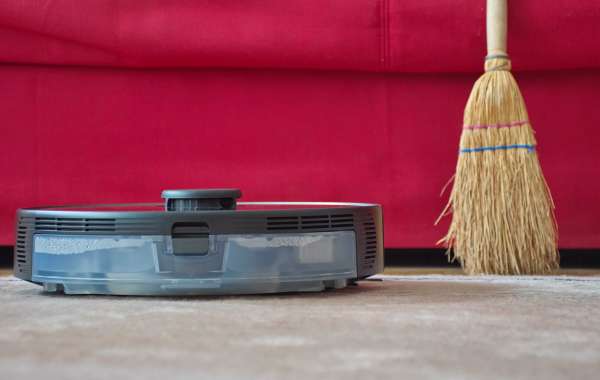 A Robot Vacuum Cleaner Review
A Robot Vacuum Cleaner ReviewA robot vacuum can take a lot off your list of tasks, freeing you up to perform other tasks. It's important to keep in mind that robots can't substitute for a full-sized vacuum.
The dustbins of robot vacs are smaller than those of traditional vacs, and therefore have to be cleaned more often. Look for models that have self-emptying docking stations to eliminate the need for manual emptying.
1. They're simple to use
While robots can't quite match the dirt-busting capabilities of a full-size vacuum cleaner, they do an excellent job of cleaning all kinds of particles, from fine ones such as baking soda and sand to larger debris like orzo pasta, metal screws and pet hair. Because they are smaller than the majority of vacuums, they can fit under couches and ottomans to reach crevices where most vacuums can't.
Most robots use a combination of sensors to navigate and map the floor. Laser, infrared and camera-based systems are the most common. The information from these sensors is combined with mapping algorithms to create an imaginary map of your home. This map helps the robot clean up in a planned way while avoiding spots that are missed. The app allows you to set "no go zones" so that the robot won't clean areas such as pet beds or playpens for kids.
Once the robot has laid out your home, it is ready to start working. As it moves systematically over the floors, its main brush picks dust and dirt while the side brushes remove debris from corners and edges. Some of our top-performing models even feature an incline mopping pad that can clean up spills and dry-on food residue.
While robotic vacuums are less difficult to maintain than full-size vacs but you must maintain them regularly to ensure they perform as well as possible for the long run. This means emptying the dust bin after each cleaning session, and taking out any hairs that have become tangled from the brushes (especially those with bristles that tend to get tangled) to prevent jamming the mechanism. You should also clean the robot docking station and battery periodically to remove dirt.
2. They're safe
In contrast to traditional vacuums Robot cleaners are constructed with sensors that let them know when they're near an object. This means that your pets or furniture won't be sucked up by the machine. They also have a stair detection feature to avoid accidents and help identify safe routes on your floors. Some robot vacuums feature virtual walls that allow you to define the boundaries of the device.
A robot vacuum is unlikely to cause damage to the wooden floors in your establishment. A majority of these devices are designed with rubber wheels and soft brushes that won't scratch the surface. It is important to ensure that you have a vacuum in your home prior to buying one. It is important to get rid of things like slippers and socks as well as pet toys and larger power cords from the floor. Keep rugs in good condition so that they don't get caught in the vacuum nozzle.
When choosing a model with mopping capabilities, you should be aware of electrical outlets and floor plugs. Mopping and water do not mix, so you should avoid these areas during cleaning sessions. You can also use the "no-mop zone" feature to set boundaries for your robot in its app.
Like any electronic device there's a chance for problems with robot vacs. They are more complicated than regular vacuums and include more moving parts, which means they are more susceptible to fail or malfunction at times. However, many robotic vacuum manufacturers offer one- or two-year warranty. If you follow the manufacturer’s maintenance recommendations, your machine will last longer.
3. They're convenient
Robot vacuum cleaners are useful because they can be programmed to clean your home according to a schedule that is convenient for you. They are small and easy to store. They usually come with a docking system that allows them to be recharged. This means you don't have to fret about unwinding the cord, dragging it around the house, or finding an available outlet. They are also less expensive than traditional vacuum cleaners.
While robot vacuum cleaners excel for general, automated cleaning, they can't be a full replacement for a manual vacuum cleaner. They're not powerful enough to clean large quantities of debris, and could be stuck in carpet fibres. As a result, it's best to have a standard vacuum on standby for large cleaning tasks.
On the other hand, robot vacuum cleaners are perfect for small tasks such as cleaning and sweeping areas that are not frequented by traffic. They are particularly helpful in homes with lots of pet hair. However, it is important to keep in mind that your robot vacuum cleaner will require maintenance from time to time. This includes cleaning the rotating brush to get rid of tangled fur and emptying the bin after each cleaning session, as well as cleaning or changing the filter.
You can expect your robot to work for many years if you take care of it in a timely manner. Many manufacturers have stated that their robot vacuums are in use by consumers after 10 years. As long as you stick to the maintenance instructions and clean and reposition the robot on a regular basis (it could lose its grip as time passes) and replace parts such as wheels and batteries, your robot should perform well for many years.
4. It's eco-friendly
Robot vacuum cleaners are more energy efficient than conventional units and can save you money on your electricity bills. The lower energy usage is due to the advanced technology used in these robots as cleaning partners.
This technology includes cameras and sensors that allow them to navigate with precision. LiDAR-based systems for instance, use lasers to scan the surroundings and map rooms, ensuring maximum efficiency. Camera-based systems rely on cameras built into the system to create a visual map. However this can be a challenge when the lighting is dim. Sensor-based systems are suitable for most homes, but can be difficult to reach and consume more energy. These robots also come with sensors that prevent them from falling, and large-area maps, which allow them to clean a larger area in one cleaning session.
Recent advancements in robotic vacuum technology has also improved their ability to navigate obstacles. A new generation of robots, like, can detect furniture or other objects while they move around the space. These intelligent robots can pause, and then return to the exact spot where they were when they left. This ensures that they have filled every inch of space.
The latest robotic vacuum cleaners are environmentally friendly, using bio-mass balanced materials and post-consumer recyclable (PCR) plastics to minimize waste. The result is a light and durable cleaning tool that is able to combine performance and design freedom.
Think about a robot vacuum powered by solar panels if are concerned about your home's impact on the environment. This cleaner will save you time and effort while assisting you live a more sustainable lifestyle. It's important to remember that, like all cleaning appliances robot vacuum cleaners require regular maintenance. You'll need to take out any tangled fur from their brushes and empty the dust container after each cleaning session, and clean the sensors and camera to ensure that they work properly.
5. They're reasonably priced
If you don't want to splurge on the latest top-of-the-line robot vacuum cleaner, there are a variety of budget-friendly alternatives. It's important to know what you're getting for your budget. Budget robots tend to have shorter warranties, and less robust customer service. This can result in a robot that is more likely to malfunction and require costly repairs or replacements.
Cheap robots are also less likely to have the same degree of intelligence that helps them navigate around the home. Although mapping and obstacle avoidance technologies have improved however, they're still not impervious to danger. In the end, certain models can get tripped up by slippers and socks or power cords, as well as pet hair, even if you've taken the time to "robot-proof" your home.
In addition, budget robots typically have smaller bins that require to be cleaned more frequently. This is particularly true in the case of pets that shed fur and can leave a trail of fur on your floors.
The robots that are budget-friendly may have trouble cleaning dusty floors and baseboards. They might not be as effective as models that cost more. If you have shag-pile carpets which are very thick, the machine could become stuck and stop cleaning.
When you are shopping for a robot there are certain things that will make it more cost effective in the long run. Find a robot that has an extended battery life, a large bins and the capacity to charge and continue cleaning from where it started. Also, check the manufacturer's website for reviews of customers reviews to see how pleased the owners are with their purchase. You'll be able to determine if the product is worth it.







